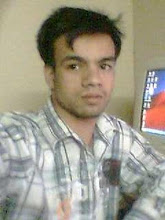 Syangja in 1994 under the auspices of the South Asia Poverty Alleviation Programme (SAPAP) of the UNDP, received million of dollars of international investment and has become a model for national development. Syangja's model has proved so successful that the Government of Nepal joined forces with the SAPAP to extend the project to other districts and make it a model for national development. It has been initiated or implemented in at least 200 Village Development Councils (VDCs) of 45 districts of Nepal
Syangja in 1994 under the auspices of the South Asia Poverty Alleviation Programme (SAPAP) of the UNDP, received million of dollars of international investment and has become a model for national development. Syangja's model has proved so successful that the Government of Nepal joined forces with the SAPAP to extend the project to other districts and make it a model for national development. It has been initiated or implemented in at least 200 Village Development Councils (VDCs) of 45 districts of NepalMany different ethnicities of people live in this district. The major groups consists of Brahmin, Kshatriya, Gurung, muslim,Magar and others. The people are famous for their unique identity. Brahmin and chetri (Kshatriya) are renowned by their representation in the
governmental jobs and Indian army respectively. Gurungs and Magars are famous because of their involvement in British Army Gurkhas and Military of India. Wild leopards roam free in less developed areas.
The places of Syangja district that keeps their name in history are Sataoun chandi, Manakamana, Bhirkot durbar, Alamdevi, Nuwakot durbar, Chhangchhangdi, Ridi, Jaisidanda etc. Jaisidanda is famous for its hold in the politics of Syangja District for a long time.governmental jobs and Indian army respectively. Gurungs and Magars are famous because of their involvement in British Army Gurkhas and Military of India. Wild leopards roam free in less developed areas.
Putalibazaar municipality is in eastern and central syangja. Waling is a municipality in western Syangja. It is a longitudinal valley along the beautiful Adhikhola river.
Syangja District, a famous district in Nepalese Bureaucracy, has producing intelligent bureaucrats of the country. Many N G Os are working in syangja. Suryodaya Club, Ask , AACDC, CDRC, Nrids are local ngos are working different sector around syangja
























No comments:
Post a Comment